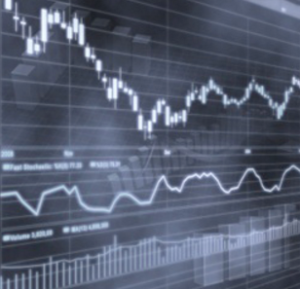There are no infallible guides to stock market movements. However, that doesn't stop investors from using various measurements to try to divine the current and future direction of a stock's price or the equity markets as a whole. Here are some common methods (or metrics) for gauging the stock market.
 GAUGING VOLATILITY
GAUGING VOLATILITY
The CBOE Volatility Index®, informally referred to as the VIX® and nicknamed "the fear index," measures real-time changes in the prices of a group of S&P 500 30-day options traded on the Chicago Board Options Exchange. When financial markets are stressed, prices of those options tend to rise as investors try to hedge any potential negative impact on their portfolios. The more concerned options traders are about potential instability, the higher the VIX tends to go; conversely, when fears subside, the VIX tends to be lower. How high is high for the VIX? During the worst of the 2008 financial crisis, it spiked to 89 at one point. Since then, it has gradually returned to more normal levels in the teens and twenties.
MOVING AVERAGES
A moving average reflects a stock's average price or an index's value over a specified period of time (for example, the last 50 days). As a new average for the time period is calculated each day, the earliest day's data drops out of the average. The results are typically depicted as a line on a chart, which shows the direction in which that rolling average has been moving. For example, a stock's 50-day moving average (DMA) shows whether the stock's short-term price has been moving up or down; a 200 DMA smoothes out shorter-term fluctuations by using the longer 200-day rolling time period. When a stock's price moves above its 50-day or 200-day average--two of the most popular gauges--technical analysts typically consider it a bullish signal that the stock or index has momentum. Conversely, when the price moves below its moving average, it's considered a bearish signal suggesting that any uptrend could be reversing.
GOLDEN CROSS/DEATH CROSS
When the short-term moving average of a stock or index rises above a longer-term average--for example, when the 50 DMA moves upward above its 200 DMA--the situation is referred to as a "golden cross." It shows that the stock's most recent price action has been increasingly positive, suggesting that investors have grown more bullish on the stock. Technical analysts also look for golden crosses with various stock indices--the S&P 500 is perhaps the most popular--to try to gauge the potential future direction of the equity markets.
The so-called "death cross" is the inverse of a golden cross. It occurs when the 50 DMA falls below the 200-day, and is considered a bearish signal, especially when seen in a broad market index such as the S&P 500. Such signals may or may not be valid; there are arguments on both sides. However, many of the automated trading systems that are responsible for a large percentage of all transactions are guided at least in part by such perceived quantitative signals. As a result, an index or stock can experience volatility--either up or down--as it reaches either of these points.
FUNDAMENTAL METRICS
Other stock market metrics rely on the nuts and bolts of corporate operations that are reflected on a company's balance sheet--so-called "fundamental data." Though based on the operations of individual companies, they also can be aggregated and averaged to suggest the state of an overall stock market index comprised of those stocks. The following represent some frequently used fundamental stock metrics.
Earnings per share (EPS): This represents the total amount earned on behalf of each share of a company's common stock (not all of which is necessarily distributed to stockholders). It is calculated by dividing the total earnings available to common stockholders by the number of shares outstanding.
Price-earnings (P/E) ratio: This represents the amount investors are willing to pay for each dollar of a company's earnings. Calculated by dividing the share price by the EPS, it can be used to gauge investor confidence in the company's future. A ratio based on projected earnings for the next 12 months is a forward P/E; one based on the previous 12 months' earnings is a trailing P/E. Like EPS, P/E is considered an indicator of how expensive or cheap a stock is.
Return on equity (ROE): This is a way to gauge how efficient a company is, especially when compared to its peers in the industry. This percentage compares a company's net income (usually for the last four quarters) to the total amount of shareholders' equity (typically, the difference between a company's total assets and its total liability).
Debt/equity ratio: Obtained by dividing a company's total liability by all shareholder equity, this percentage suggests the extent to which the company relies on borrowing to finance its growth.
Prepared by Broadridge Investor Communication Solutions, Inc. Copyright 2012
 GAUGING VOLATILITY
GAUGING VOLATILITY